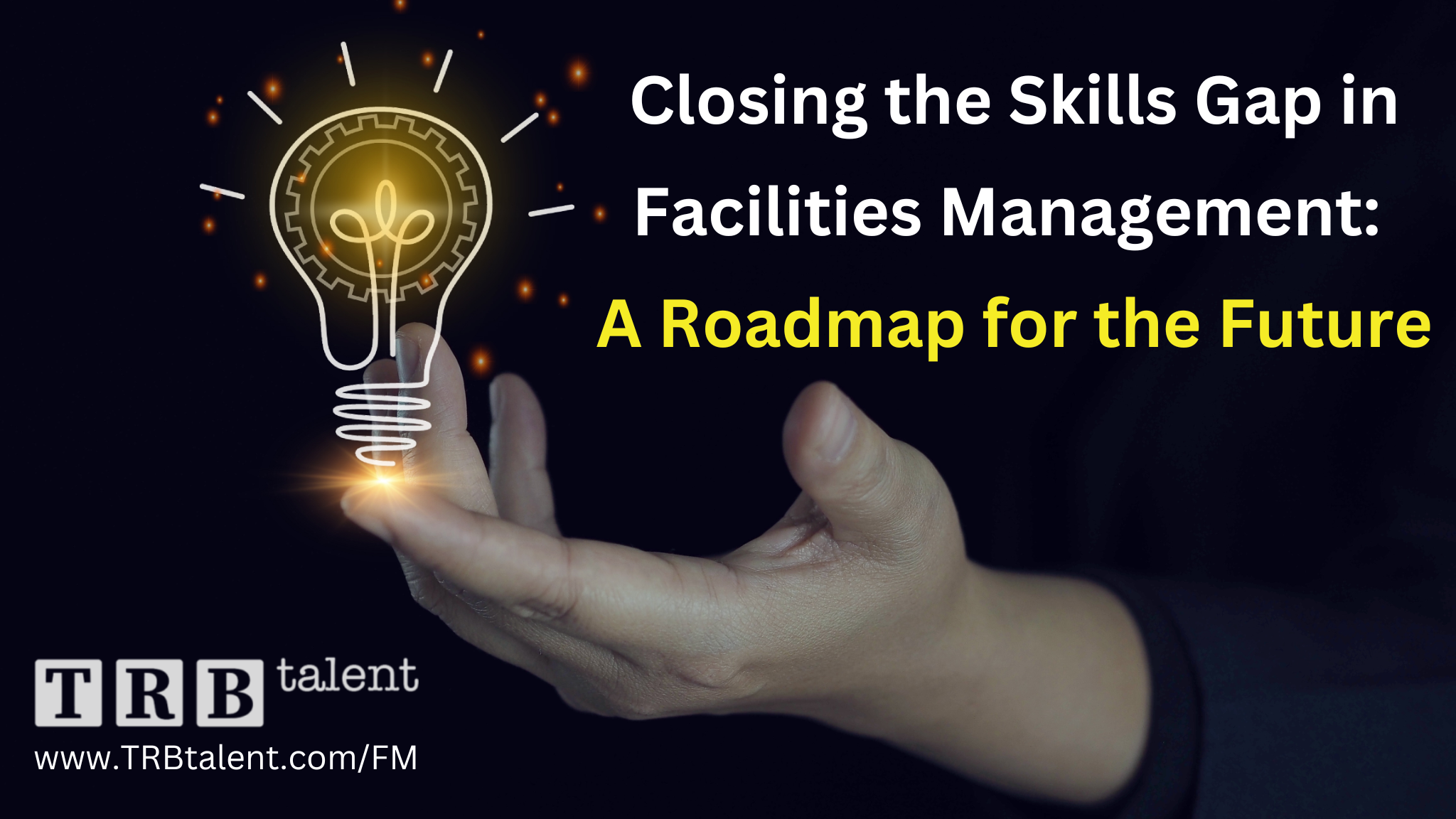Closing the Skills Gap in Facilities Management: A Roadmap for the Future
1. The Changing Landscape of Facilities Management
Historically, facilities management was largely focused on physical maintenance—HVAC systems, electrical repairs, and cleaning services. Today, however, FM has evolved into a multifaceted profession that requires a deeper understanding of smart technologies, sustainability, data analytics, and workplace management.
Factors Contributing to the Skills Gap:
- Technology Integration: As buildings become “smarter” with IoT devices and automation systems, traditional FM roles now require technical proficiency in managing digital tools.
- Sustainability Demands: Green building practices and regulatory compliance have added layers of complexity that demand knowledge of energy management, BREAM certification, and environmental sustainability.
- Aging Workforce: Many experienced FM professionals are retiring, taking decades of knowledge with them, while younger workers may lack the practical experience or technical expertise needed for modern facilities.
2. Key Skills Needed for Modern Facilities Management
To close the skills gap, it’s essential to understand the key competencies required in today’s FM landscape. Facility managers must possess a mix of both hard and soft skills, with a focus on the following areas:
- Technical Proficiency: Mastery of building automation systems, IoT integration, and smart building technology.
- Sustainability and Energy Management: Understanding green certifications, renewable energy systems, and sustainable resource management.
- Data Analytics: Ability to analyse data for predictive maintenance, energy efficiency, and space utilisation.
- Project Management: Managing large-scale projects, such as retrofits or new construction, requires project planning, budgeting, and leadership skills.
- Soft Skills: Communication, collaboration, and problem-solving are increasingly vital as FM teams work closely with other departments and stakeholders.
3. Closing the Skills Gap: Key Strategies
a) Upskilling and Reskilling the Workforce
The most effective way to bridge the gap is through continuous learning. Facilities management teams should prioritise upskilling and reskilling to align with industry advancements.
- Training Programs: Offer targeted training on emerging technologies, sustainability practices, and new regulations. These can be conducted in-house or through partnerships with professional organisations like the Institute of Workplace and Facilities Management (IWFM).
- Certifications: Encourage employees to pursue certifications. IWFM offers 6 levels of qualification, these qualifications not only enhance skills but also boost career development. There are many other independent providers of excellent on-line and classroom training.
- On-the-Job Learning: Provide opportunities for hands-on experience with new tools and technologies, allowing workers to adapt to evolving building management systems.
b) Attracting New Talent to the Industry
Recruiting the next generation of facilities managers is essential to fill the gaps left by retiring professionals and to bring fresh perspectives.
- Collaboration with Educational Institutions: For larger organisations you can partner with universities with appropriate degree courses, for smaller organisations and in particular subcontractors, it is a good idea to develop a strong relationship with your local further education (FE) colleges with relevant training courses.
- Apprenticeships and Internships: Offering apprenticeships or internship opportunities gives young professionals practical experience and exposure to the complexities of modern FM. The CIPD recently welcomed the governments new plans on apprenticeship, enabling more apprenticeships across many sectors.
- Promoting the Profession: Many young professionals are unaware of facilities management as a viable career path. Efforts to raise awareness about FM’s importance and potential for growth can attract a more diverse talent pool.
c) Embracing Technology in Learning
Facilities management technology is advancing, so training should reflect this shift. Leveraging technology in training programs can make learning more accessible and effective.
- Online Courses and Webinars: With the availability of e-learning platforms, facilities managers and all organisations involved in the provision of FM services, both soft and hard, can access a wealth of information from online training providers, allowing your business to develop their very own training and employee development programmes.
- Mobile Learning: Apps and mobile learning tools make it easier for facilities professionals to upskill on the go, especially in fast-paced work environments where time is limited.
d) Mentorship and Knowledge Transfer
As experienced professionals retire, capturing their knowledge before they leave is essential. Establishing mentorship programs can facilitate this.
- Mentoring Programs: Pairing seasoned members of your team with younger employees creates a structured environment for knowledge transfer. This allows newer workers to gain hands-on insights and build confidence.
- Documenting Processes: Developing comprehensive documentation and guides ensures that best practices, troubleshooting techniques, and operational knowledge are captured and easily accessible for future generations.
4. The Role of Leadership in Closing the Skills Gap
Leaders in facilities management must actively drive efforts to address the skills gap. This requires not only investment in training but also fostering a culture of continuous learning and innovation.
- Championing Lifelong Learning: Leaders should encourage employees at all levels to pursue ongoing education, supporting career growth while improving organisational capabilities.
- Fostering a Collaborative Culture: Collaboration across departments—such as IT, HR, and Sustainability teams—can help integrate new skills and technologies into FM roles more effectively.
- Strategic Workforce Planning: Facility management leaders need to anticipate future skills needs and invest in building the right talent pipeline to keep pace with industry demands.
Conclusion
The skills gap in facilities management is a challenge that cannot be ignored. As the industry continues to evolve with new technologies, sustainability initiatives, and workplace dynamics, facility managers must keep up. Through targeted training, recruitment efforts, mentorship, and a forward-thinking leadership approach, organisations can close the gap and ensure that their facilities are managed with efficiency, expertise, and innovation.
By embracing these strategies, the future of facilities management will not only meet but exceed the demands of modern buildings and workplaces.
About TRBtalent FM
TRBtalent are specialist recruiters with hands-on experience within the FM sector. We recruit technical and non-technical positions at all levels within the sector. We support FM companies, In-house teams and Subcontractors to find the skilled talent they are looking for. With our dedicated proactive search and selection on all assignments we find top performers across the UK.
All placements come with our 12 Month Rebate and Replacement Policy as standard on all roles filled. To find out more call 01622 934 954 or contact Jeremy Barwick directly at Jeremy@TRBtalent.co.uk



